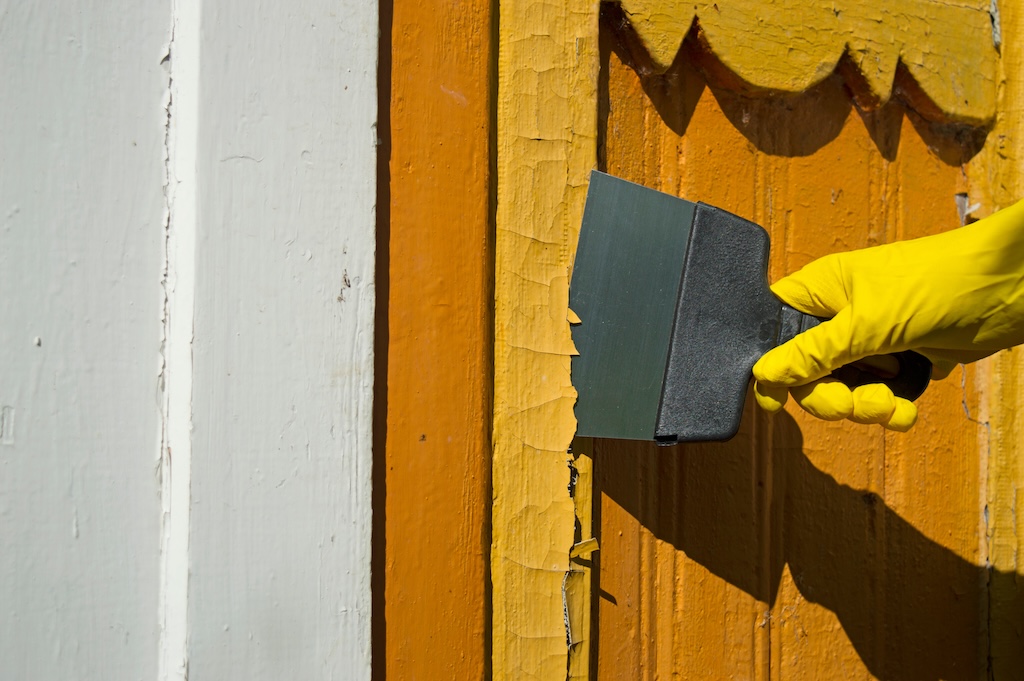Dealing with unwanted paint on various surfaces can be a frustrating part of any DIY project. Fortunately, there are several effective methods for removing paint, many of which can be accomplished with common household items or simple tools. In this blog, we’ll explore various DIY solutions for removing unwanted paint, each suited for different types of paint and surface conditions. These methods range from simple household remedies to more specialized techniques, ensuring there’s a solution for every type of paint problem. By familiarizing yourself with these methods, you can approach your paint removal project with greater confidence and efficiency.
Soap and Water Method
Simple soap and water can effectively remove fresh paint spills, especially if the paint is water-based. Gently blot the spill with a mixture of soap and water, and then rinse thoroughly with clean water. This method works best on wet paint as it can be diluted and washed away easily. Be sure to use a soft cloth or sponge to avoid damaging the surface during the cleaning process. This approach is ideal for accidental spills on both hard surfaces and fabrics, where harsher chemicals could cause damage or discoloration.
Using a Heat Gun
A heat gun can be used to soften older, tougher layers of paint on surfaces like wood and metal. The key is to apply heat evenly and carefully, and then gently scrape the paint away. This method requires caution to prevent burns and to avoid damaging the surface with excessive heat. It’s essential to keep the heat gun moving to prevent the heat from concentrating in one area, which could warp or burn the surface. This technique is particularly useful for stripping paint from larger surfaces or intricate woodwork where precision is important.
Chemical Paint Strippers
Chemical paint strippers are useful for tackling more stubborn paint. It’s advisable to choose non-toxic, environmentally friendly strippers that are safer for both the user and the environment. Apply the stripper according to the manufacturer’s directions and allow sufficient time for the paint to soften before scraping it off. Always work in a well-ventilated area and follow safety instructions to prevent harm from fumes or direct contact with the skin. Chemical strippers are effective on various paint types but require careful handling and proper disposal of used material.
Sanding for Removal
Sanding is an effective method for removing paint, especially from wood surfaces. Begin with a coarser grit sandpaper to remove the bulk of the paint and finish with a finer grit to smooth out the surface. Always wear a mask to avoid inhaling paint particles and other debris. Sanding can be labor-intensive but provides a thorough removal method that prepares surfaces for refinishing. It’s particularly useful for large surfaces where mechanical sanders can expedite the process.
Vinegar for Water-Based Paint
White vinegar is an eco-friendly option effective in softening water-based paint. Heat the vinegar slightly, apply it to the painted surface, and allow it to sit for a few minutes. The paint will begin to soften and can then be easily scraped away. This method is safe, uses readily available household ingredients, and avoids the use of harsh chemicals. Vinegar is particularly useful for small projects or in areas where ventilation is limited.
Citrus-Based Solvents
Citrus-based solvents are a safer and more environmentally friendly option for paint removal. These solvents work effectively on various surfaces and emit a pleasant citrus odor, making them more enjoyable to use. Derived from natural citrus oils, these solvents break down paint without the harsh chemicals found in traditional paint removers. They are especially suitable for households seeking greener alternatives for their DIY projects. Citrus-based solvents are effective on both water-based and oil-based paints and are gentle on most surfaces.
Safety Precautions
Regardless of the method used, safety should always be a priority when removing paint. Wear gloves and a mask, particularly when working with chemical strippers or during sanding, to protect against chemical exposure and inhaling particles. Ensure good ventilation, especially when using solvents or chemicals, and properly dispose of any paint waste. These precautions help prevent accidents and health risks, allowing for a safer DIY experience.
Final Thoughts
Removing unwanted paint doesn’t have to be a daunting task. With the right tools and techniques, you can effectively and safely tackle paint removal projects, restoring your surfaces to their original state. The key to successful paint removal is patience and choosing the right method for the type of paint and surface involved. By following the advice in this blog, you’ll be well-equipped to handle any paint removal challenge that comes your way, ensuring a clean and refreshed look for your space. For more DIY paint removal tips and home improvement ideas, visit our website at sisupainting.comand check out our blog at sisupainting.com/blog.





No comment